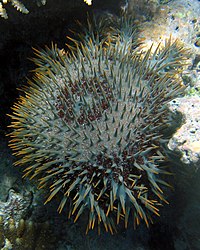
Photo from wikipedia
Abstract Ecological, environmental, and geographic factors all influence genetic structure. Species with broad distributions are ideal systems because they cover a range of ecological and environmental conditions allowing us to… Click to show full abstract
Abstract Ecological, environmental, and geographic factors all influence genetic structure. Species with broad distributions are ideal systems because they cover a range of ecological and environmental conditions allowing us to test which components predict genetic structure. This study presents a novel, broad geographic approach using molecular markers, morphology, and habitat modeling to investigate rangewide and local barriers causing contemporary genetic differentiation within the geographical range of three white‐crowned sparrow (Zonotrichia leucophrys) subspecies: Z. l. gambelii, Z. l. oriantha, and Z. l. pugetensis. Three types of genetic markers showed geographic distance between sampling sites, elevation, and ecosystem type are key factors contributing to population genetic structure. Microsatellite markers revealed white‐crowned sparrows do not group by subspecies, but instead indicated four groupings at a rangewide scale and two groupings based on coniferous and deciduous ecosystems at a local scale. Our analyses of morphological variation also revealed habitat differences; sparrows from deciduous ecosystems are larger than individuals from coniferous ecosystems based on principal component analyses. Habitat modeling showed isolation by distance was prevalent in describing genetic structure, but isolation by resistance also had a small but significant influence. Not only do these findings have implications concerning the accuracy of subspecies delineations, they also highlight the critical role of local factors such as habitat in shaping contemporary population genetic structure of species with high dispersal ability.
Journal Title: Ecology and Evolution
Year Published: 2021
Link to full text (if available)
Share on Social Media: Sign Up to like & get
recommendations!